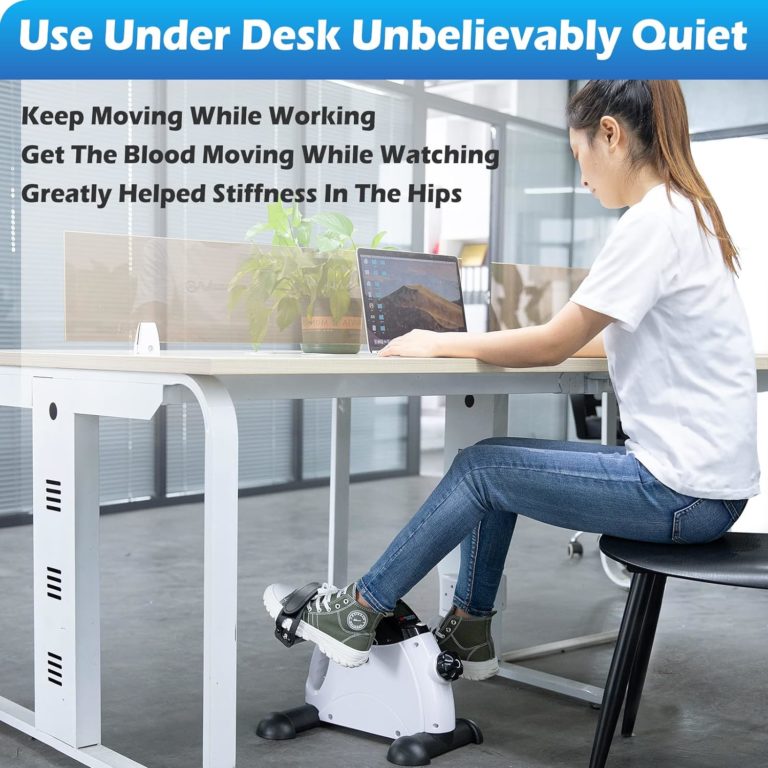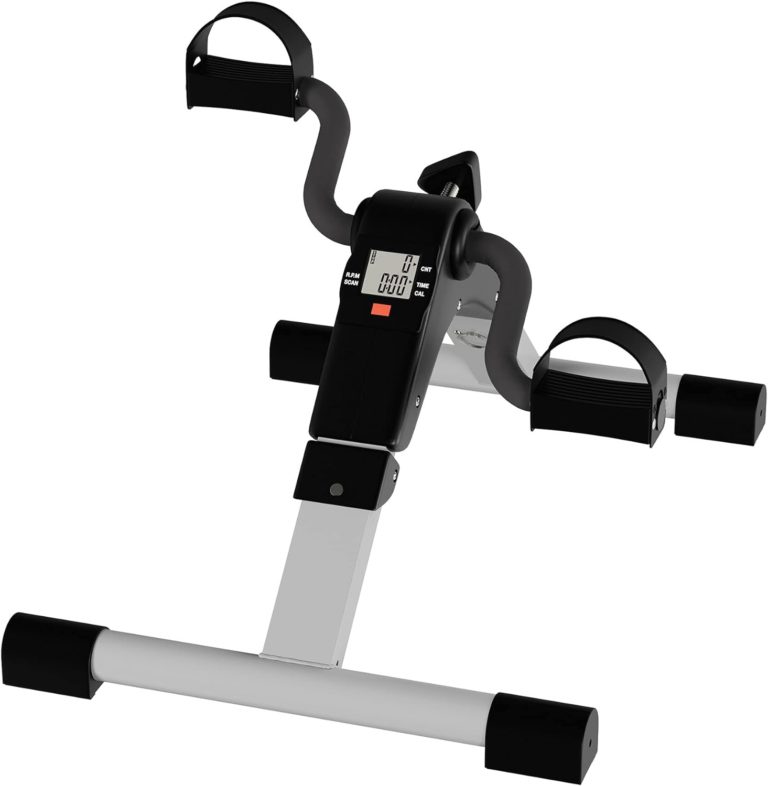The Importance Of Using A Standing Desk At Work
As an Amazon Associate I earn from qualifying purchases.

Are you tired of feeling sluggish and unmotivated after a long day at work? Well, have you ever considered the benefits of using a standing desk? In today’s fast-paced world, it’s becoming increasingly important to prioritize our health and well-being, even while at work. This article explores the importance of using a standing desk at work, highlighting the numerous advantages it offers, from improved posture and increased energy levels to reduced risk of chronic diseases. So, why not take a stand for your health and productivity by switching to a standing desk?
Improves Posture
Reduces neck and back pain
Using a standing desk can significantly improve your posture and reduce the likelihood of experiencing neck and back pain. When sitting for prolonged periods, it is easy to slouch and adopt poor posture, leading to strain on the neck and back muscles. However, standing encourages you to maintain a more upright position, engaging your core muscles and aligning your spine properly. By standing instead of sitting, you can alleviate the pressure on your neck and back, relieving pain and discomfort.
Maintains a neutral spine alignment
One of the key benefits of using a standing desk is that it helps you maintain a neutral spine alignment throughout the day. When sitting, it is common to hunch over or slouch, causing your spine to curve unnaturally. This can lead to back problems and chronic pain in the long run. However, when using a standing desk, you are more likely to keep your spine properly aligned, mitigating the risk of developing posture-related issues. By promoting a neutral spine alignment, a standing desk supports the natural curvature of your spine, reducing the strain on your back and ensuring optimal spinal health.
Strengthens core muscles
Standing while working at a standing desk engages your core muscles, leading to increased strength and stability. When you stand, your abdominal and back muscles work together to support your body’s weight and maintain a proper posture. This constant activation of your core muscles helps to improve their strength and endurance over time. A stronger core not only contributes to better posture but also helps in preventing lower back pain and enhancing overall physical performance. By incorporating a standing desk into your workspace, you can enjoy the added benefit of strengthening your core muscles while you work.
Increases Energy and Productivity
Boosts blood circulation
Using a standing desk can help boost blood circulation throughout your body. When sitting for extended periods, blood flow can become restricted, leading to feelings of numbness, fatigue, and decreased energy levels. However, by standing up and staying active, you promote better blood circulation, allowing oxygen and nutrients to reach your muscles more efficiently. Improved blood circulation can help you feel more alert, energized, and focused, ultimately enhancing your productivity and performance throughout the day.
Enhances focus and concentration
Standing while working at a standing desk can enhance your focus and concentration levels. Sitting for long periods can sometimes lead to a feeling of lethargy or a decrease in mental clarity. However, when you stand, you engage different muscle groups and increase overall blood flow, including to your brain. This increased blood flow can enhance cognitive function, enabling you to stay more alert and focused on your tasks. By maintaining a more active and upright position, a standing desk can help you stay mentally sharp and productive throughout your workday.
Prevents mid-day slump
One common phenomenon many people experience is the mid-day slump, characterized by a sudden drop in energy and a decrease in productivity. However, using a standing desk can help prevent this mid-day slump. By standing and staying active, you keep your muscles engaged and your blood flowing, helping to combat the feelings of fatigue and sluggishness that can occur after sitting for long periods. Rather than succumbing to the mid-day slump, a standing desk allows you to maintain a more consistent level of energy and productivity, leading to a more productive and successful workday.
Reduces Risk of Chronic Diseases
Lowers risk of obesity
Using a standing desk can contribute to a lower risk of obesity. Sitting for extended periods has been associated with weight gain and an increased risk of obesity. When you sit, your body burns fewer calories, and your metabolism slows down. However, by implementing a standing desk, you introduce more movement and activity into your daily routine, increasing calorie expenditure and preventing excessive weight gain. Standing while working can help you maintain a healthier body weight, reducing the risk of obesity and its associated health complications.
Decreases the likelihood of cardiovascular disease
Prolonged sitting has been linked to an increased risk of cardiovascular disease, including heart attacks and strokes. Sitting for extended periods can lead to poor blood circulation, high blood pressure, and increased levels of cholesterol and triglycerides in the blood. However, by using a standing desk and incorporating more periods of standing and movement throughout your day, you can reduce the detrimental effects on your cardiovascular health. Standing promotes better blood flow, lower blood pressure, and improved overall cardiovascular function, thereby decreasing the likelihood of developing cardiovascular diseases.
Reduces the risk of type 2 diabetes
Using a standing desk can help reduce the risk of developing type 2 diabetes. Sitting for prolonged periods has been associated with an increased risk of insulin resistance, a key factor in the development of type 2 diabetes. However, standing and engaging in more physical activity throughout the day can assist in maintaining healthy blood sugar levels and improving insulin sensitivity. By incorporating a standing desk into your workspace, you can lower your risk of developing type 2 diabetes and enjoy better overall metabolic health.
Burns More Calories
Increases calorie expenditure
A standing desk can be a valuable tool in burning extra calories throughout the day. When compared to sitting, standing requires more energy and engages more muscles. This increased muscle activity leads to higher calorie expenditure, helping you burn more calories even while working at your desk. While the number of calories burned may vary depending on factors such as body weight and duration of standing, incorporating standing periods into your work routine can contribute to greater overall calorie burn and support weight management goals.
Aids in weight management
Weight management is an important aspect of maintaining a healthy lifestyle. Using a standing desk can aid in weight management efforts by promoting calorie expenditure and preventing excessive weight gain. Standing increases your metabolic rate and encourages small movements such as fidgeting, which can contribute to burning more calories throughout the day. By incorporating a standing desk, you can create a more active work environment that supports weight management goals and encourages a healthier lifestyle.
Reduces the risk of metabolic syndrome
Metabolic syndrome is a collection of conditions that increase the risk of developing chronic diseases such as heart disease, stroke, and diabetes. One of the key factors contributing to metabolic syndrome is a sedentary lifestyle. Using a standing desk can help reduce the risk of metabolic syndrome by incorporating more movement and physical activity into your day. Standing while working stimulates muscle activity, improves blood flow, and contributes to better metabolic function. By minimizing sedentary behavior and utilizing a standing desk, you can reduce the risk of developing metabolic syndrome and its associated health complications.
Improves Mood and Mental Health
Stimulates the release of endorphins
Using a standing desk can help stimulate the release of endorphins, your body’s natural feel-good chemicals. Endorphins are neurotransmitters that promote feelings of happiness, pleasure, and overall well-being. When you stand and engage in physical activity, such as pacing or light stretching, your body releases endorphins. These endorphins can help improve your mood, reduce stress levels, and provide a natural boost of energy. By incorporating a standing desk into your workspace, you can harness the positive effects of endorphins, leading to improved mood and enhanced mental well-being.
Reduces stress and anxiety
The modern workplace can be a stressful environment, and chronic stress can have detrimental effects on both mental and physical health. Using a standing desk can help reduce stress and anxiety levels. Standing and engaging in light movement throughout the day can help release built-up tension, promote relaxation, and alleviate stress. Additionally, the increased blood flow and release of endorphins associated with standing can have a positive impact on mood and emotional well-being, further reducing stress and anxiety levels. By using a standing desk, you can create a workspace that supports mental health and cultivates a more positive and stress-free working environment.
Enhances overall well-being
By improving posture, increasing energy levels, reducing the risk of chronic diseases, and promoting positive mental health, using a standing desk can enhance your overall well-being. Physical and mental well-being are closely intertwined, and by prioritizing your health in the workplace, you can experience an improved quality of life. Standing while working not only supports physical health but also contributes to boosted mood, enhanced focus, and increased productivity. By adopting a standing desk, you can prioritize your well-being and create a work environment that promotes a healthier and happier lifestyle.
Promotes Collaboration and Communication
Facilitates spontaneous interaction
Using a standing desk can promote spontaneous interaction and collaboration in the workplace. When you stand to work, you are less confined to your own desk space and more open to interaction with colleagues. Standing desks encourage natural conversations, as individuals can easily approach each other without the physical barrier of sitting at a desk. This increased interaction can foster collaboration, idea-sharing, and camaraderie among team members, leading to a more productive and cohesive work environment.
Improves team dynamics
Team dynamics play a crucial role in the success and productivity of a workplace. Using a standing desk can contribute to improved team dynamics by creating a more open and inclusive atmosphere. When team members stand and collaborate together, they are on equal footing, eliminating hierarchical barriers and fostering a sense of equality. This can lead to increased participation, more efficient collaboration, and the development of stronger relationships among team members. By incorporating standing desks, you can enhance team dynamics and create a more cohesive and high-performing work team.
Enhances collaboration
Collaboration is essential for innovation and problem-solving in the workplace. Using a standing desk can enhance collaboration among colleagues. When standing, individuals are more likely to engage with each other, exchange ideas, and work together to find solutions. Standing desks facilitate a more fluid and dynamic working environment, encouraging collaboration and teamwork. By providing employees with standing desks, you promote a culture of collaboration and create an environment that encourages the sharing of ideas and facilitates effective teamwork.
Supports a Healthy Lifestyle
Encourages movement throughout the day
A sedentary lifestyle is detrimental to overall health and well-being. Using a standing desk encourages movement throughout the day, helping you break free from long periods of sitting. Standing to work prompts you to change positions, shift weight, and engage in light movements. These small movements, combined with regular standing breaks, help improve blood circulation, prevent muscle stiffness, and reduce the risk of sedentary-related health issues. By incorporating a standing desk into your workspace, you can make movement an integral part of your work routine and embrace a more active and healthy lifestyle.
Promotes a more active lifestyle
Using a standing desk can serve as a catalyst for adopting a more active lifestyle. By choosing to stand instead of sit, you are taking a proactive step towards incorporating physical activity into your daily routine. Consistently using a standing desk can help you feel more energized and motivated to engage in other forms of exercise outside of work. This can create a positive domino effect, as increased physical activity leads to improved fitness levels, better overall health, and a greater sense of well-being. By making the switch to a standing desk, you are opening the door to a more active and health-conscious lifestyle.
Reduces sedentary behavior
Prolonged sitting has been linked to numerous health risks, including cardiovascular disease, obesity, and musculoskeletal issues. Using a standing desk can help you reduce sedentary behavior and its associated health consequences. By standing and incorporating more movement into your day, you break the cycle of prolonged sitting and minimize the time spent in a sedentary position. This reduction in sedentary behavior can have a positive impact on your overall health and well-being. By choosing a standing desk, you actively prioritize your health and take steps towards reducing the negative effects of sedentary behavior.
Easy to Implement
Adaptable to different workspaces
One of the key advantages of using a standing desk is its adaptability to different workspaces. Standing desks come in various forms, including adjustable desks that allow you to switch between sitting and standing positions seamlessly. Whether you work in a traditional office, a home office, or a shared workspace, there are standing desk options available that can accommodate your needs. The flexibility and adaptability of standing desks make them easy to implement in any workspace setting, ensuring that you can reap the benefits regardless of your work environment.
Does not require additional equipment
Using a standing desk does not require any additional equipment or complicated setup. Standing desks are designed to be user-friendly and easy to use. Whether you opt for a height-adjustable desk or a riser that can be placed on top of your existing workspace, the transition to a standing desk is straightforward. You can simply adjust the height to your preference and start standing while you work. This lack of additional equipment or complex installation makes implementing a standing desk a hassle-free and convenient choice for improving your overall health and well-being in the workplace.
Flexible usage options
Standing desks provide flexible usage options and can be customized to suit your individual preferences and needs. Depending on your energy levels, physical comfort, or work tasks, you can switch between sitting and standing throughout the day. This flexibility allows you to find a balance that works best for you. Perhaps you prefer to stand for shorter bursts or alternate between sitting and standing at regular intervals. The adjustable features of standing desks provide you with the freedom to customize your workspace experience according to your specific requirements, ensuring maximum comfort and productivity throughout the day.
Improves Blood Sugar Control
Regulates blood sugar levels
Using a standing desk can help regulate blood sugar levels, especially for individuals at risk of or diagnosed with diabetes. When you stand and engage in light movements, your muscles require more energy, leading to improved glucose metabolism. By promoting better insulin sensitivity and glucose uptake, standing helps stabilize blood sugar levels and aids in the management of diabetes. By incorporating a standing desk into your work routine, you can actively contribute to better blood sugar control and enjoy the associated health benefits.
Enhances insulin sensitivity
Insulin sensitivity refers to the body’s responsiveness to insulin, a hormone that regulates blood sugar levels. Improving insulin sensitivity is crucial for individuals at risk of developing type 2 diabetes or those who already have diabetes. Using a standing desk enhances insulin sensitivity by increasing muscle activity and promoting glucose uptake. By standing and engaging in light movements throughout the day, you improve your body’s ability to utilize insulin efficiently, leading to better blood sugar control and reduced risk of metabolic disorders. By investing in a standing desk, you prioritize your metabolic health and support overall well-being.
Reduces the risk of metabolic disorders
Metabolic disorders, such as insulin resistance, prediabetes, and type 2 diabetes, pose significant health risks. Incorporating a standing desk into your work routine can help reduce the risk of developing these metabolic disorders. By standing and engaging in light movement, you encourage better insulin sensitivity, improved glucose metabolism, and decreased blood sugar fluctuations. These factors contribute to reduced risk and better management of metabolic disorders. Standing at your desk is a proactive measure you can take to support your metabolic health, reduce the risk of metabolic disorders, and enjoy improved overall well-being.
Enhances Long-Term Health
Promotes longevity
Using a standing desk can contribute to promoting longevity and a healthier lifespan. The detrimental effects of prolonged sitting on health have been widely studied, with research linking excessive sitting to increased mortality rates. By reducing sitting time with a standing desk, you decrease the impact of sedentary behavior and its associated health risks. Standing while working encourages movement, activity, and improved blood circulation, leading to a healthier cardiovascular system and reduced likelihood of chronic diseases. By investing in a standing desk, you prioritize your long-term health and increase your chances of enjoying a longer, healthier life.
Improves overall health outcomes
A standing desk can lead to improved overall health outcomes. By incorporating standing into your work routine, you contribute to better blood circulation, enhanced metabolism, increased calorie burn, strengthened core muscles, and improved posture. These factors collectively support and improve various aspects of health, including cardiovascular health, weight management, musculoskeletal health, and mental well-being. By improving these key areas of health, you can significantly enhance your overall health outcomes, reduce the risk of chronic diseases, and enjoy a higher quality of life.
Reduces the risk of premature death
Prolonged sitting has been associated with an increased risk of premature death. The sedentary lifestyle prevalent in many workplaces contributes to various health issues, including obesity, cardiovascular disease, and other chronic conditions. However, by incorporating a standing desk into your work routine, you can actively reduce the risk of premature death. Standing while working encourages movement, increases calorie expenditure, improves blood circulation, and supports overall health. By making a conscious choice to stand instead of sit, you prioritize your health, reduce the risk of premature death, and increase your chances of leading a healthier and longer life.
In conclusion, using a standing desk at work can have numerous benefits for your physical health, mental well-being, and overall productivity. From improving posture and reducing pain to enhancing energy levels and promoting collaboration, a standing desk offers a range of advantages that contribute to a healthier and more fulfilling work experience. By incorporating a standing desk into your workspace, you can take a proactive step towards prioritizing your health, enhancing productivity, and creating a sustainable work environment that promotes your overall well-being.
Amazon and the Amazon logo are trademarks of Amazon.com, Inc, or its affiliates.






